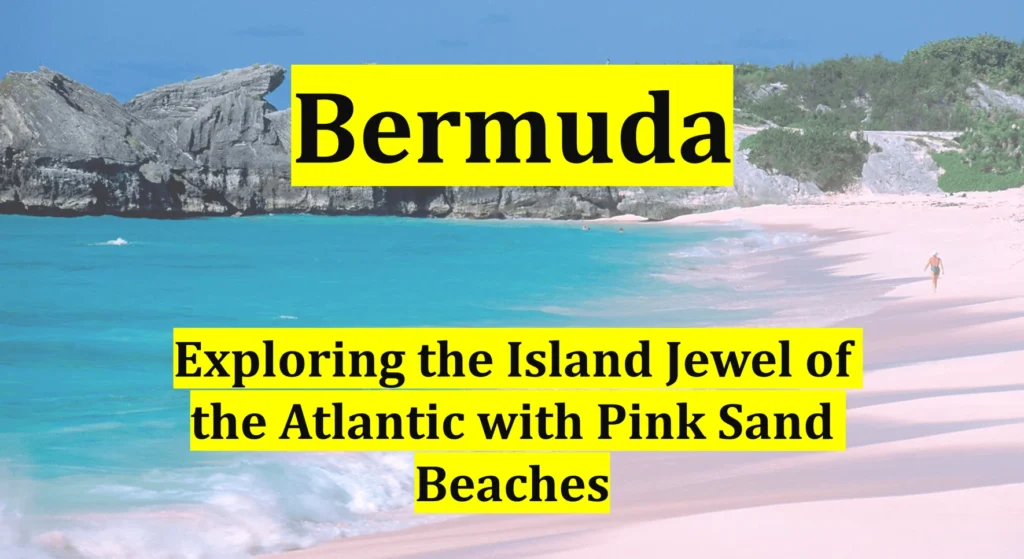
Introduction to Bermuda
Captivating Description of Bermuda’s Allure
Picture an island where pastel-colored houses line the pristine coastline, their vibrant hues standing in stark contrast to the sparkling turquoise waters of the Atlantic Ocean. Its beauty is the stuff of postcards and daydreams—a paradise where lush greenery and fragrant flowers abound, and where each cove and bay reveal a new, stunning vista. Imagine stepping onto the soft pink sands of Horseshoe Bay Beach, feeling the gentle waves lap at your feet, and gazing out at a horizon where the sky meets the sea in an endless expanse of blue. The island’s air is warm and inviting, carrying the subtle scent of saltwater and blooming bougainvillea.
As you wander through its charming streets, the blend of British colonial architecture and island style creates a unique and picturesque environment. Historic forts and lighthouses stand as silent sentinels, offering panoramic views and a glimpse into the island’s storied past. The rhythm of it is laid-back yet vibrant, a place where the pace of life slows down just enough to savor each moment, whether you’re exploring the underwater world of coral reefs or enjoying a sunset dinner with fresh, locally sourced seafood.
Overview of Bermuda as a Travel Destination
Bermuda, a British Overseas Territory located in the North Atlantic Ocean, is renowned for its stunning natural beauty, rich history, and vibrant culture. Just a short flight from the east coast of the United States, Bermuda is an accessible yet exotic escape for travelers seeking both adventure and relaxation. The island spans just 21 square miles, but its small size belies a wealth of attractions and activities that cater to a variety of interests.
For beach lovers, its coastline is a treasure trove of idyllic spots. The island’s famous pink sand beaches, such as Elbow Beach and Warwick Long Bay, provide perfect settings for sunbathing, swimming, and snorkeling. Crystal-clear waters reveal a vibrant underwater world, making Bermuda a top destination for scuba divers and marine enthusiasts. The island’s coral reefs, shipwrecks, and diverse marine life create unparalleled diving experiences.
History buffs will find plenty to explore in its historic sites and museums. St. George’s, a UNESCO World Heritage site, offers a journey back in time with its well-preserved colonial architecture and cobblestone streets. The Bermuda Maritime Museum, housed in the impressive Royal Naval Dockyard, showcases the island’s seafaring heritage and naval history.
It also boasts a rich cultural scene. The island’s unique blend of British and Caribbean influences is evident in its festivals, music, and cuisine. Visitors can enjoy the rhythmic beats of Gombey dancers, sample traditional Bermudian dishes like fish chowder and cassava pie, and explore local art galleries and craft markets.
Outdoor enthusiasts will appreciate its numerous parks, nature reserves, and golf courses. The Bermuda Railway Trail offers a scenic route for walking or biking, winding through the island’s lush landscapes and offering stunning coastal views. Golfers can tee off at world-class courses, each offering its own spectacular scenery and challenging play.
In addition to its natural and cultural attractions, it is known for its warm hospitality and high-quality accommodations. From luxury resorts and boutique hotels to charming guesthouses, there is lodging to suit every traveler’s preference. The island’s well-developed infrastructure ensures that visitors can easily navigate and enjoy all that Bermuda has to offer.
Overall, it is a multifaceted travel destination that combines natural beauty, rich history, and vibrant culture. Whether you’re looking for a romantic getaway, a family vacation, or an adventurous escape, Bermuda promises an unforgettable experience in an island paradise.
A Brief History of Bermuda
Discovery by Spanish Explorer Juan de Bermúdez
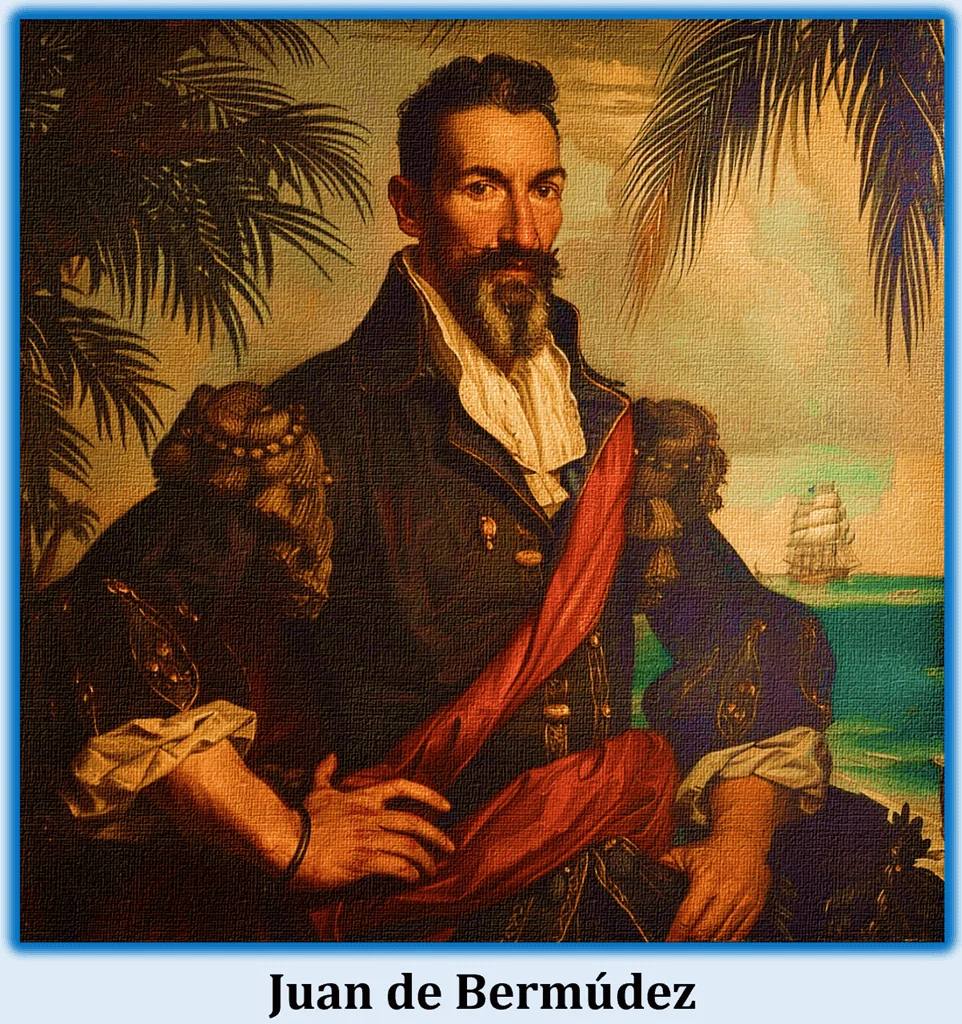
Its recorded history begins with its discovery by Spanish explorer Juan de Bermúdez in 1503. Bermúdez, after whom the island is named, came across it while on a voyage from Spain to the New World. He did not land on the island but noted its location and treacherous surrounding reefs, which later caused many ships to wreck on its shores. These early encounters with the island led to its nickname, the “Isle of Devils,” due to the eerie sounds made by nocturnal birds and the dangerous reefs that posed a significant hazard to passing ships.
Overview of British Colonization and Historical Significance
Bermuda remained uninhabited and largely unexplored until the early 17th century. In 1609, a ship named the Sea Venture, part of a fleet carrying settlers to the Jamestown colony in Virginia, was shipwrecked on its reefs during a severe storm. Led by Admiral Sir George Somers, the survivors spent ten months on the island. They found it rich in resources and built two new ships, Deliverance and Patience, to continue their journey to Virginia. However, they left behind a small group to lay claim to Bermuda for England.
In 1612, the English formally established a settlement on it with the arrival of the ship Plough, carrying 60 settlers. This marked the beginning of its permanent habitation and its transformation into a British colony. The Virginia Company initially governed Bermuda, but it soon became a self-governing colony under the Company of the City of London, known as the Somers Isles Company. This period saw the development of St. George’s, Bermuda’s first capital and one of the earliest English towns in the New World. St. George’s is now a UNESCO World Heritage site, reflecting its historical significance.
Throughout the 17th and 18th centuries, its strategic location in the Atlantic made it a vital naval and maritime hub. The British Royal Navy established a significant presence on the island, constructing the Royal Naval Dockyard to defend against potential threats. Bermuda also became a center for shipbuilding and maritime commerce, contributing to its economic development.
Transition to a Tourism and Business Hub
In the 19th and 20th centuries, it underwent a significant transition from a strategic military outpost to a thriving tourism and business hub. The decline of the British Empire’s global influence and advancements in naval technology reduced the strategic importance of its military installations. However, the island’s natural beauty, mild climate, and proximity to North America positioned it perfectly as a tourist destination.
The advent of steamships and later airplanes made it more accessible to travelers. The first luxury hotels opened in the late 19th century, catering to affluent visitors seeking a tropical escape. The tourism industry boomed in the early 20th century, with it becoming known for its beautiful beaches, high-quality accommodations, and relaxed lifestyle. Famous visitors, including writers, politicians, and celebrities, helped enhance Bermuda’s reputation as an exclusive and desirable destination.
In addition to tourism, it developed a robust international business sector. The island’s favorable tax environment and regulatory framework attracted numerous insurance and reinsurance companies, making Bermuda one of the world’s leading centers for these industries. The financial services sector expanded, with banking, investment management, and other financial services becoming significant contributors to the economy.
Today, its economy is driven by both tourism and international business, with these sectors providing employment and revenue for the island. The blend of historical charm, natural beauty, and modern amenities continues to attract visitors and businesses alike, ensuring its place as a unique and prosperous destination in the Atlantic.
Geography and Climate
Location in the Atlantic Ocean
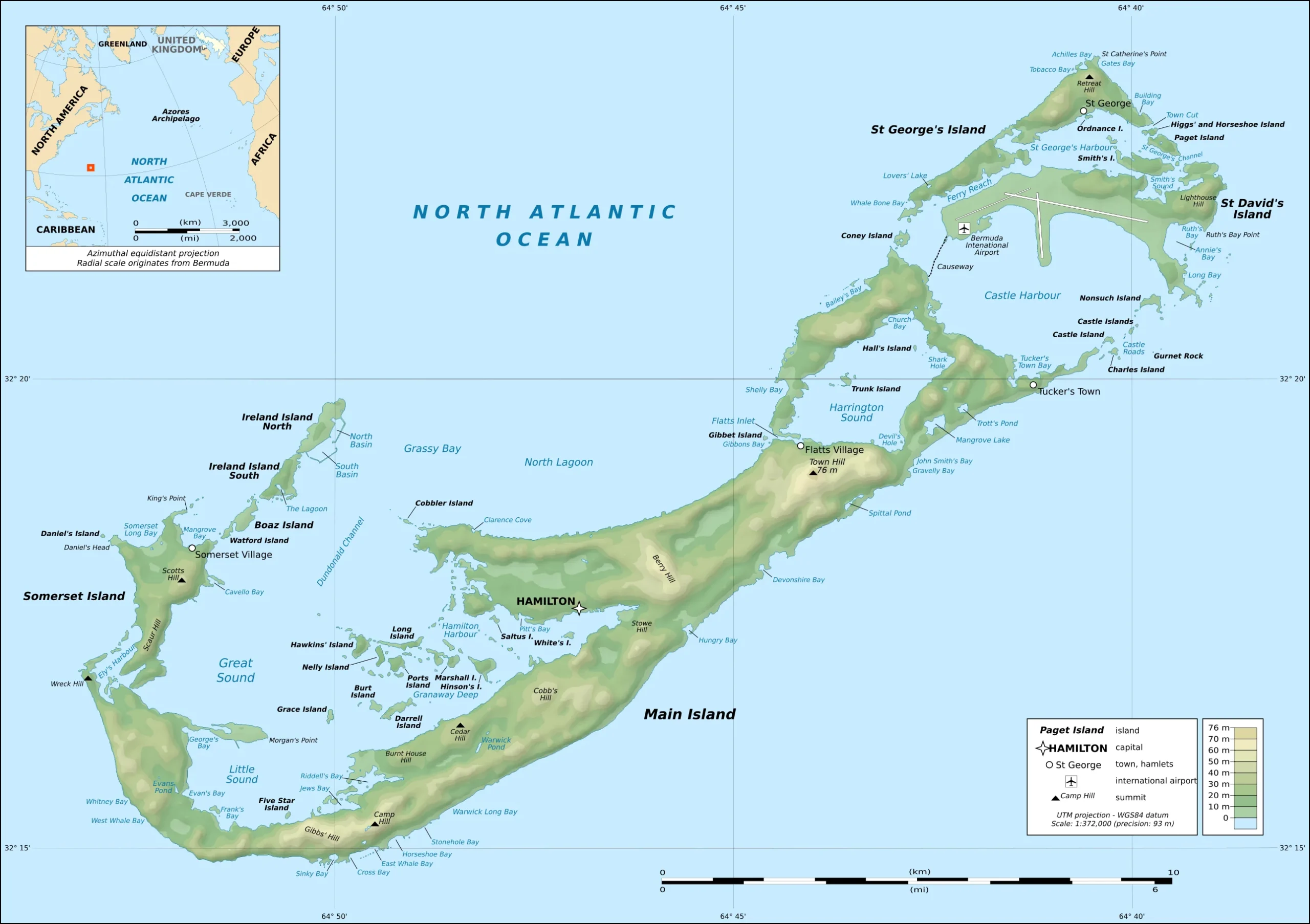
Bermuda is an isolated yet accessible paradise situated in the North Atlantic Ocean, about 650 miles (1,050 kilometers) east of Cape Hatteras, North Carolina, USA. Despite its geographical proximity to North America, it is often mistakenly thought to be part of the Caribbean. In reality, it lies much farther north, making its climate and geographical characteristics distinct.
The archipelago consists of about 138 islands, islets, and rocks, but the main islands are connected by bridges and causeways, forming a fishhook-shaped landmass. The total land area is roughly 21 square miles (54 square kilometers), making it a compact destination where visitors can easily explore its diverse attractions. The island is surrounded by coral reefs, which contribute to its famous clear, blue waters and also pose a navigational challenge, historically leading to numerous shipwrecks around its perimeter.
Subtropical Climate and Best Times to Visit
Bermuda enjoys a subtropical climate, characterized by mild winters and warm, humid summers. The climate is influenced significantly by the Gulf Stream, a warm ocean current that helps moderate temperatures throughout the year. This climate makes Bermuda an appealing destination year-round, though there are optimal times to visit depending on traveler preferences and activities.
Winter (December to February)
Winter in Bermuda is mild, with average temperatures ranging from 60°F to 70°F (16°C to 21°C). While not beach weather, this season is perfect for those who enjoy golf, sightseeing, and cultural activities without the crowds. Rainfall is moderate, and the island retains its lush greenery.
Spring (March to May)
Spring is one of the best times to visit Bermuda. Temperatures rise steadily, averaging between 65°F and 75°F (18°C to 24°C). The island begins to bloom, offering beautiful landscapes and comfortable weather for outdoor activities. The famous Bermuda Day, celebrated in late May, marks the unofficial start of summer and is a highlight for visitors.
Summer (June to August)
Its busiest travel season is during the summer. Average temperatures range from 75°F to 85°F (24°C to 29°C), with the ocean waters warming up, making it ideal for swimming, snorkeling, and diving. The island is bustling with activity, and visitors can enjoy a wide range of water sports, festivals, and nightlife. However, this period also coincides with the Atlantic hurricane season, which runs from June to November. While it has a robust infrastructure to handle storms, it’s wise for visitors to keep an eye on weather forecasts.
Fall (September to November)
Early fall remains warm, with temperatures between 70°F and 80°F (21°C to 27°C), gradually cooling as the season progresses. This period is less crowded than summer, providing a more relaxed atmosphere while still offering pleasant weather for beach activities and exploration. The threat of hurricanes persists, particularly in September, but October and November tend to be quieter in terms of tropical storms.
Rain in Bermuda
Rainfall in it is fairly evenly distributed throughout the year, but the island experiences a wetter period from May to October. Despite this, rain showers are typically brief and often followed by sunshine, rarely disrupting plans for long. The consistent sea breeze provides relief from the summer humidity, making outdoor activities enjoyable.
Its subtropical climate ensures that it remains a desirable destination year-round. Spring and fall are particularly attractive times to visit for those looking to avoid the peak season crowds while still enjoying pleasant weather. Summer offers the quintessential Bermuda experience with bustling beaches and vibrant events, though it’s wise to be mindful of the hurricane season. Winter provides a quieter, more relaxed visit with mild temperatures ideal for exploring the island’s cultural and historical offerings.
Natural Beauty and Outdoor Activities
Bermuda, a captivating archipelago in the North Atlantic Ocean, is renowned for its breathtaking natural beauty and an array of outdoor activities that attract visitors from around the globe. This section delves into three of its most enchanting outdoor attractions: its famous beaches, exceptional snorkeling and diving spots, and scenic walking and hiking trails.
Famous Beaches
Its beaches are legendary for their soft pink sands and crystal-clear turquoise waters, creating a picturesque paradise for beachgoers.
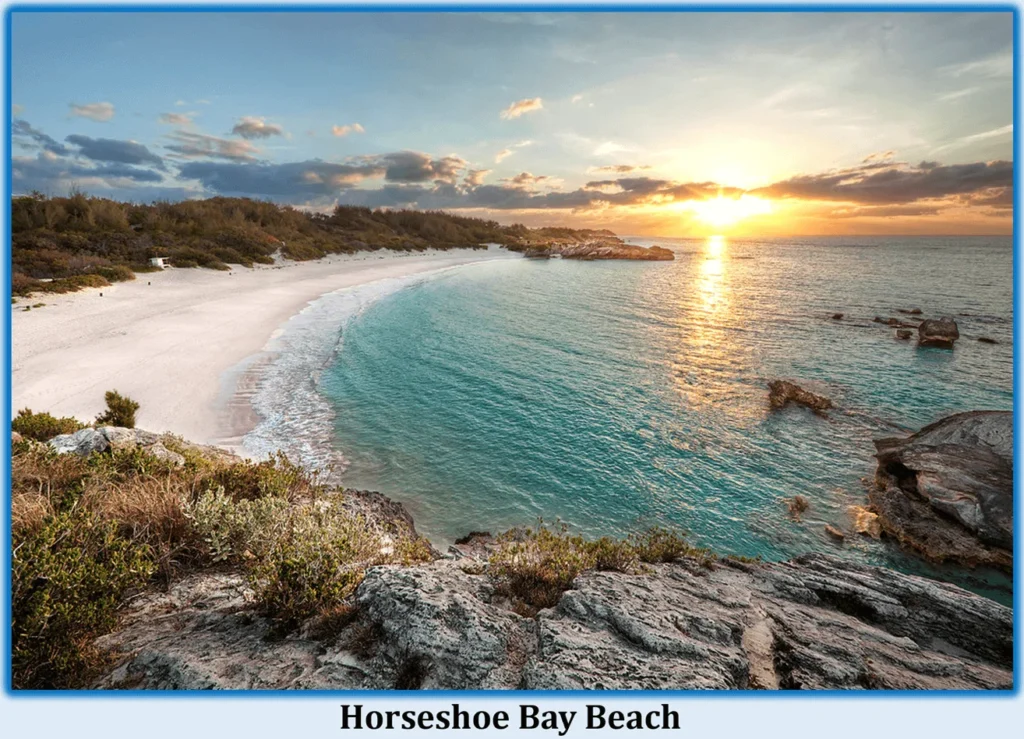
- Horseshoe Bay Beach: Perhaps the most famous of all, Horseshoe Bay Beach is known for its crescent-shaped shoreline, dramatic limestone cliffs, and pristine pink sand. It offers excellent swimming conditions and is often the backdrop for beach events and festivals.
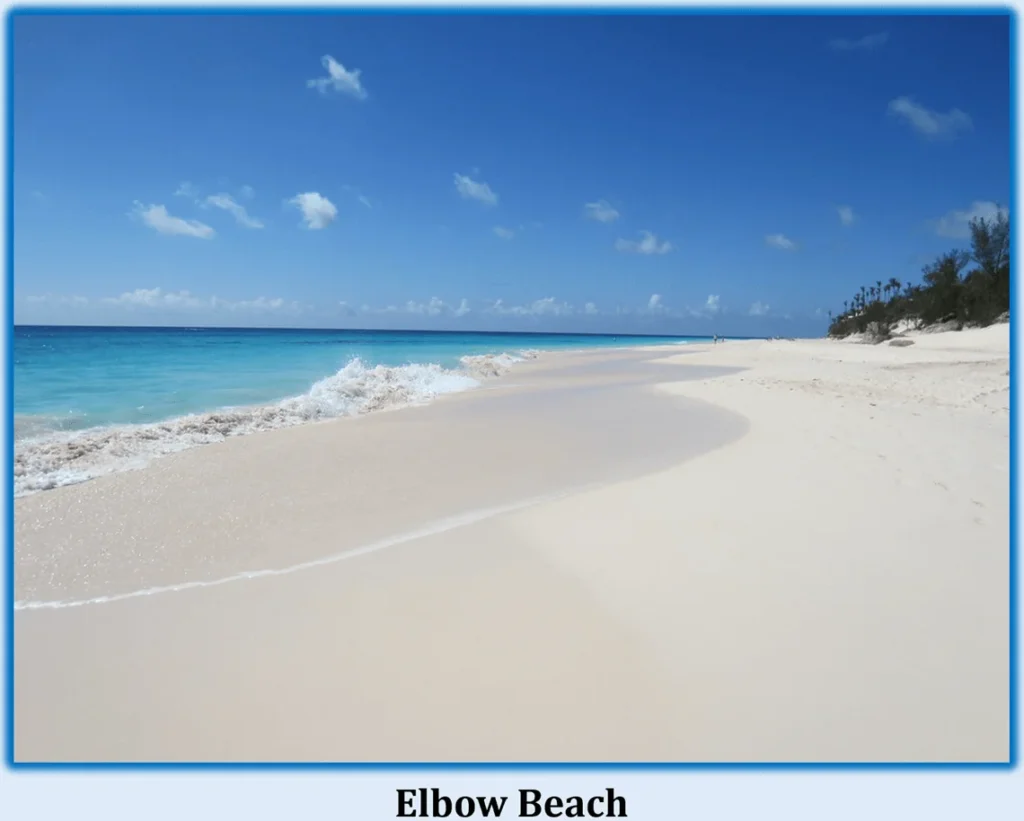
- Elbow Beach: A favorite among both locals and tourists, Elbow Beach is named for its curved shape. This is the perfect place for swimming, water sports, and sunbathing. The beach also has a coral reef located close to the shore, making it a good location for snorkeling.
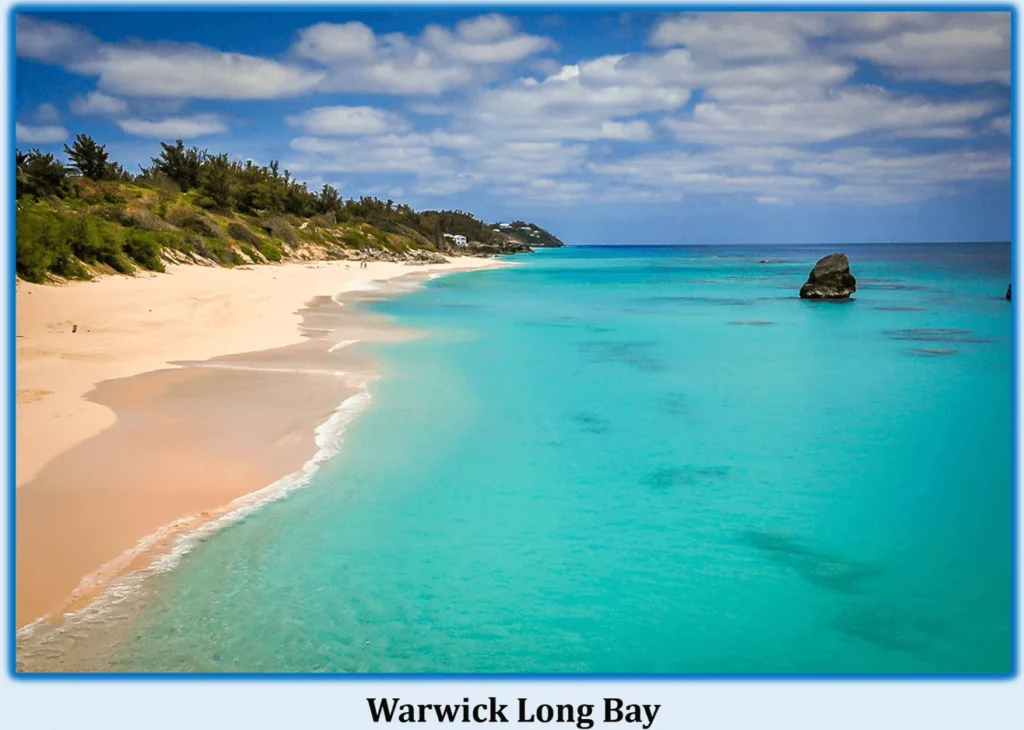
- Warwick Long Bay: Less crowded than the more popular beaches, Warwick Long Bay offers a tranquil retreat with stunning natural beauty. Its long stretch of pink sand and rocky outcrops make it a perfect location for a quiet day by the sea.
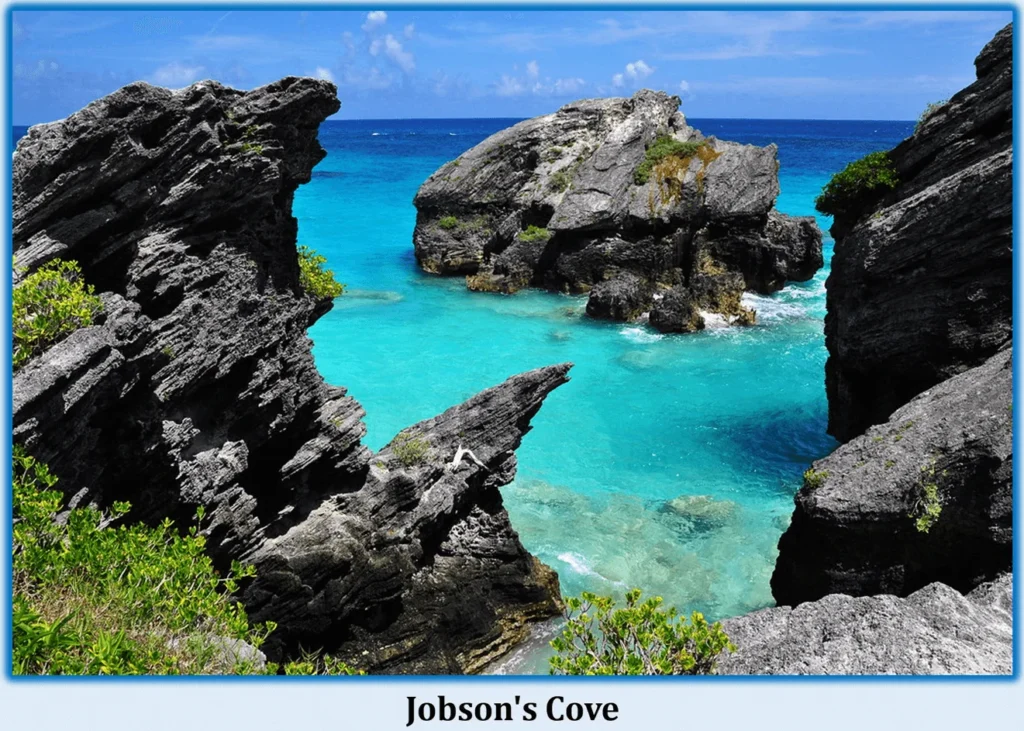
- Jobson’s Cove: This small, secluded beach is surrounded by high cliffs, providing a sheltered and serene environment. This is the perfect place for families with kids because of the shallow, quiet waters.
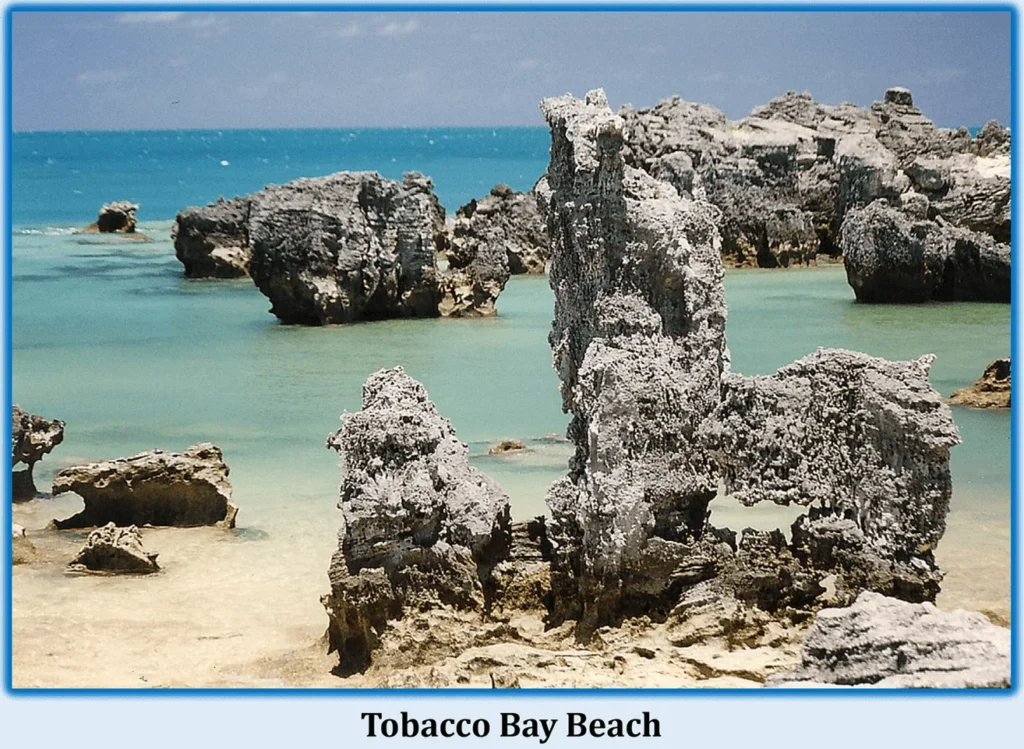
- Tobacco Bay Beach: Known for its unique rock formations and vibrant marine life, Tobacco Bay is a favorite for snorkeling and exploring the underwater world.
Snorkeling and Diving Spots
Its underwater landscape is just as stunning as its beaches, offering some of the best snorkeling and diving experiences in the world. The island’s waters are teeming with vibrant coral reefs, shipwrecks, and diverse marine life.
- The Cathedral: This popular diving site features a large underwater cavern filled with shafts of sunlight that create a cathedral-like effect. Divers can explore the intricate formations and observe a variety of marine species.
- The Constellation & Montana Wrecks: Located near each other, these two shipwrecks are among its most famous dive sites. The Constellation, a four-masted schooner, and the Montana, a paddlewheel steamer, both offer fascinating explorations of historical wreckage and abundant marine life.
- North Rock: Known as one of the best coral reefs in it, North Rock is a vibrant and colorful underwater paradise. Snorkelers and divers can expect to see an array of tropical fish, sea fans, and coral formations.
- Blue Hole: A favorite for snorkelers, Blue Hole offers calm, clear waters and a diverse ecosystem. The site is part of the Walsingham Nature Reserve, also known as “Tom Moore’s Jungle,” adding to its allure.
- Chubb Heads: This site features dramatic underwater landscapes with steep drops and vibrant coral reefs. It’s a perfect spot for more experienced divers seeking adventure.
Walking and Hiking Trails
For those who prefer to explore it on foot, the island offers numerous walking and hiking trails that showcase its lush landscapes, coastal views, and historical sites.
- Bermuda Railway Trail: Stretching across the island, the Bermuda Railway Trail is a converted railway line that offers 18 miles of scenic walking and cycling paths. It provides a unique way to see the island, passing through diverse landscapes including forests, coastal cliffs, and picturesque villages.
- Spittal Pond Nature Reserve: This 64-acre reserve is its largest nature reserve, offering several trails that wind through wetlands, forests, and along coastal cliffs. It is a prime spot for birdwatching and enjoying the island’s natural beauty.
- Tom Moore’s Jungle (Walsingham Nature Reserve): Named after the Irish poet who once frequented the area, this reserve features winding trails through lush forest, caves, and mangroves. The trails lead to natural swimming holes and hidden grottos, perfect for an adventurous day out.
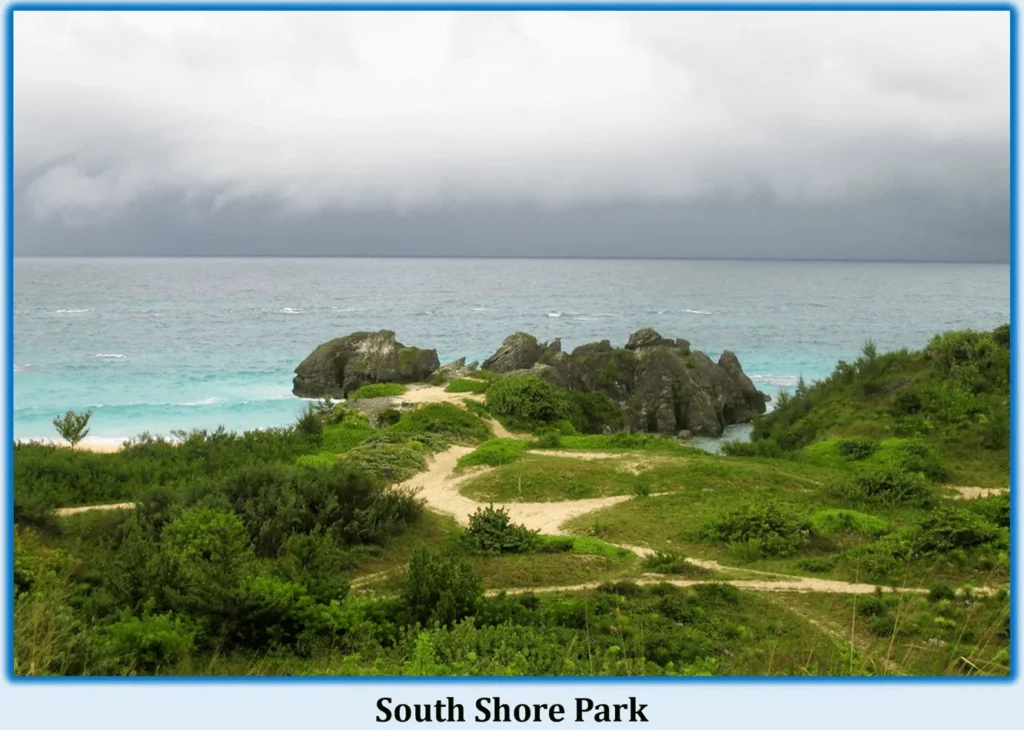
- South Shore Park: This network of trails runs parallel to some of Bermuda’s most beautiful beaches, including Horseshoe Bay and Warwick Long Bay. Hikers can enjoy stunning ocean views and access to secluded coves and beaches.
- Cooper’s Island Nature Reserve: Located at the eastern end of Bermuda, this reserve offers trails through diverse habitats including coastal cliffs, forests, and wetlands. The area is rich in wildlife and offers spectacular views of the Atlantic Ocean.
Its natural beauty and outdoor activities provide endless opportunities for exploration and adventure, ensuring that visitors leave with unforgettable memories of this island paradise.
Culture and Local Life
Its rich cultural tapestry is woven from a blend of British, African, Portuguese, and Caribbean influences. This unique mix is reflected in its customs, festivals, cuisine, art, and music, offering visitors a vibrant and immersive cultural experience.
Insight into Bermuda’s Customs, Festivals, and Events
Bermuda is known for its warm hospitality and a strong sense of community, with customs and traditions that highlight its diverse heritage.
- Bermudian Hospitality: Bermudians are known for their friendliness and welcoming nature. It is normal to extend a warm grin and say “good morning” or “good afternoon” to others. Respect for elders and politeness are deeply ingrained in Bermudian society.
- Gombey Dancers: One of its most distinctive cultural traditions, the Gombey dancers perform during significant events and celebrations. Dressed in colorful, elaborate costumes and masks, the dancers move to the rhythm of drums and whistles, drawing from African, Caribbean, and Native American influences.
- Cup Match: This is one of its most anticipated events, held annually in late July or early August. It’s a two-day cricket match between two local teams, St. George’s and Somerset, but it’s more than just a game. The event also commemorates Emancipation Day and features a festive atmosphere with food, music, and dancing.
- Bermuda Day: Celebrated on May 24th, Bermuda Day marks the start of summer and features a grand parade with floats, Gombey dancers, majorettes, and musicians. The day also includes a marathon and various community events.
- Christmas and New Year’s Festivities: Bermuda celebrates Christmas with unique local traditions, including the famous Bermuda National Trust Christmas Walkabout in St. George’s. On New Year’s Eve, Hamilton hosts a vibrant celebration with live music, food, and fireworks.
Overview of Bermudian Cuisine
Bermudian cuisine is a delightful blend of flavors influenced by its British colonial history and the diverse cultures of its inhabitants.
- Fish Chowder: This is its national dish, a savory stew made with fish, tomatoes, onions, and spices. It’s often seasoned with black rum and sherry pepper sauce, giving it a distinctive flavor.
- Codfish Breakfast: A traditional Bermudian breakfast that consists of salted codfish boiled with potatoes and onions, served with hard-boiled eggs, banana, and avocado, often accompanied by a sauce made from butter and onions.
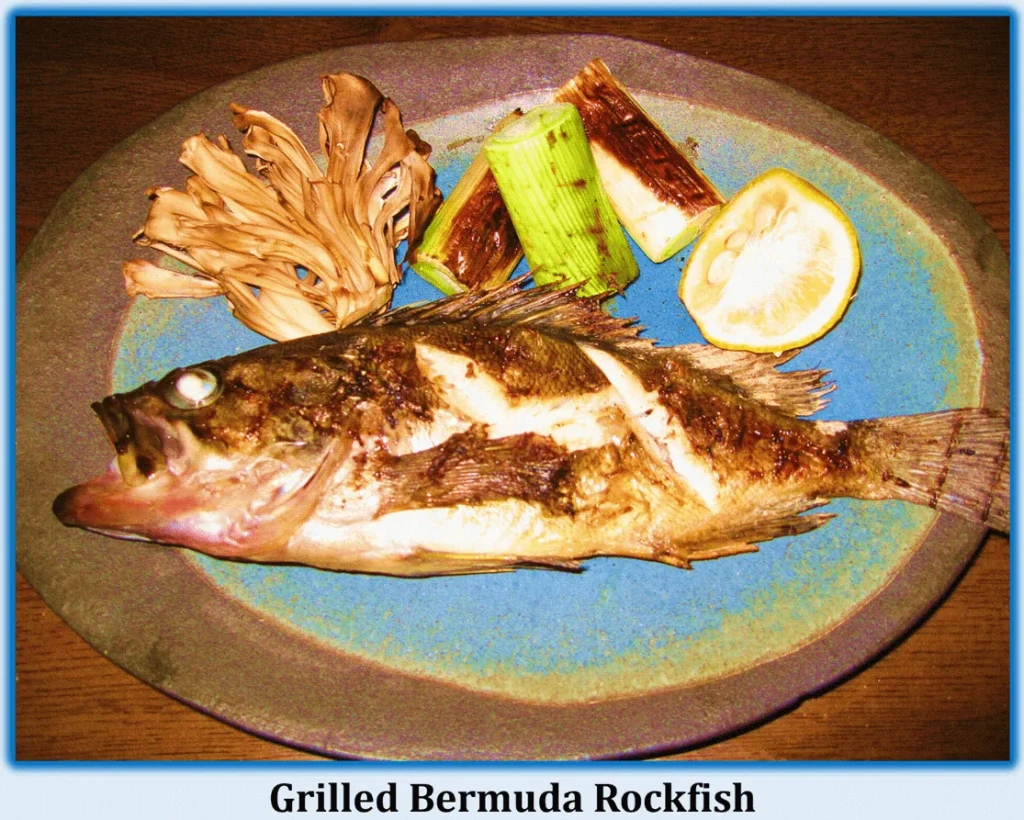
- Bermuda Rockfish: A local favorite, this fish is often grilled or fried and served with a variety of sides, showcasing the island’s abundant seafood.
- Hoppin’ John: A dish of African origin, Hoppin’ John is a savory blend of black-eyed peas, rice, and bacon or pork, often flavored with spices and herbs.
- Bermuda Rum Cake: This moist, rich cake is infused with Gosling’s Black Seal Rum, one of its famous products. It’s a popular treat for both locals and visitors.
- Dark ‘n’ Stormy: Its signature cocktail made with Gosling’s Black Seal Rum and ginger beer, often enjoyed as a refreshing drink during social gatherings.
Discussion on Local Art Scenes, Museums, and Music
Bermuda’s art scene is vibrant and diverse, reflecting the island’s rich history and cultural influences.
- Bermuda National Gallery: Located in Hamilton, this gallery showcases a range of Bermudian and international art, including paintings, sculptures, and photography. It offers rotating exhibitions and educational programs to engage the community.
- Masterworks Museum of Bermuda Art: Situated in the Botanical Gardens, this museum features an extensive collection of Bermudian art, including works by local artists and pieces inspired by Bermuda from international artists.
- National Museum of Bermuda: Located in the historic Royal Naval Dockyard, this museum explores Bermuda’s maritime history, cultural heritage, and archaeological finds. It includes exhibits on shipwrecks, slavery, and its role in world events.
- Bermuda Society of Arts: Established in 1952, this society promotes local artists through exhibitions and educational programs. It’s a hub for contemporary Bermudian art and provides a platform for emerging artists.
- Music and Performing Arts: Bermuda has a lively music scene influenced by its African, Caribbean, and British roots. Calypso, reggae, and Gombey music are popular genres. Live music is a staple in many of the island’s bars, restaurants, and festivals. The Bermuda Festival of the Performing Arts, held annually, showcases local and international talent in music, dance, and theatre.
Bermuda’s culture and local life offer a rich, immersive experience for visitors, from its vibrant festivals and culinary delights to its thriving art and music scenes. The island’s unique blend of influences and traditions makes it a captivating destination for cultural exploration.
Top Attractions
Bermuda, an enchanting island with a rich history and stunning natural beauty, offers a variety of attractions that cater to different interests. Whether you’re a history buff, nature lover, or animal enthusiast, Bermuda has something to captivate you. This section explores some of the top attractions, including its iconic landmarks, lush green spaces, and the renowned Bermuda Aquarium, Museum, and Zoo (BAMZ).
Attractive Landmarks
Bermuda is home to numerous landmarks that reflect its historical significance, architectural beauty, and cultural heritage.
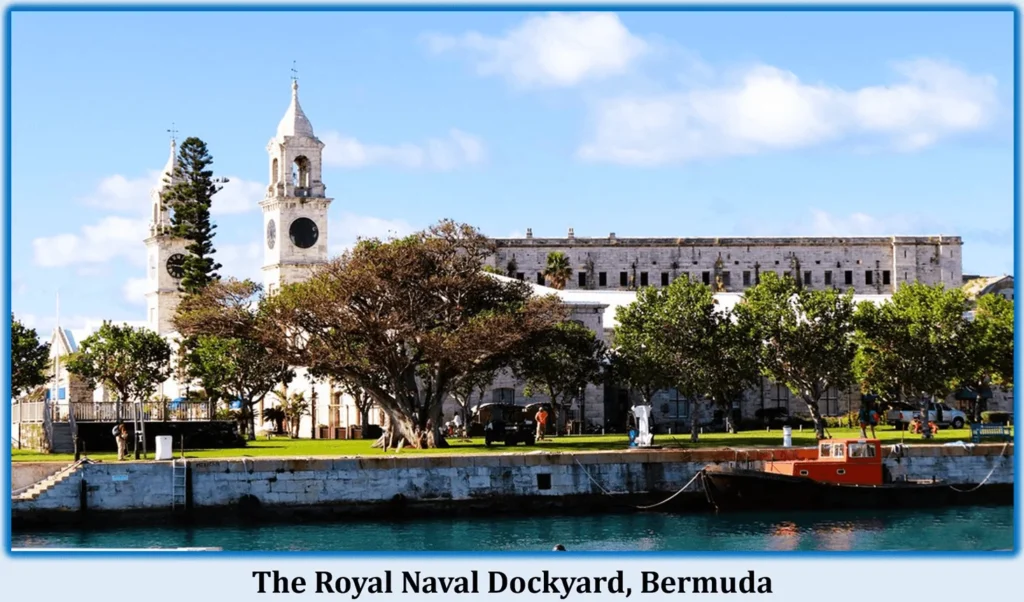
- The Royal Naval Dockyard: Located at the western tip of the island, this historical site was once a strategic naval base for the British Royal Navy. Today, it houses a variety of attractions, including the National Museum of Bermuda, the Clocktower Mall, and the Dockyard Glassworks and Bermuda Rum Cake Company. Visitors can explore the museum’s exhibits on maritime history, archaeology, and Bermudian culture while enjoying shopping and dining in the beautifully restored buildings.
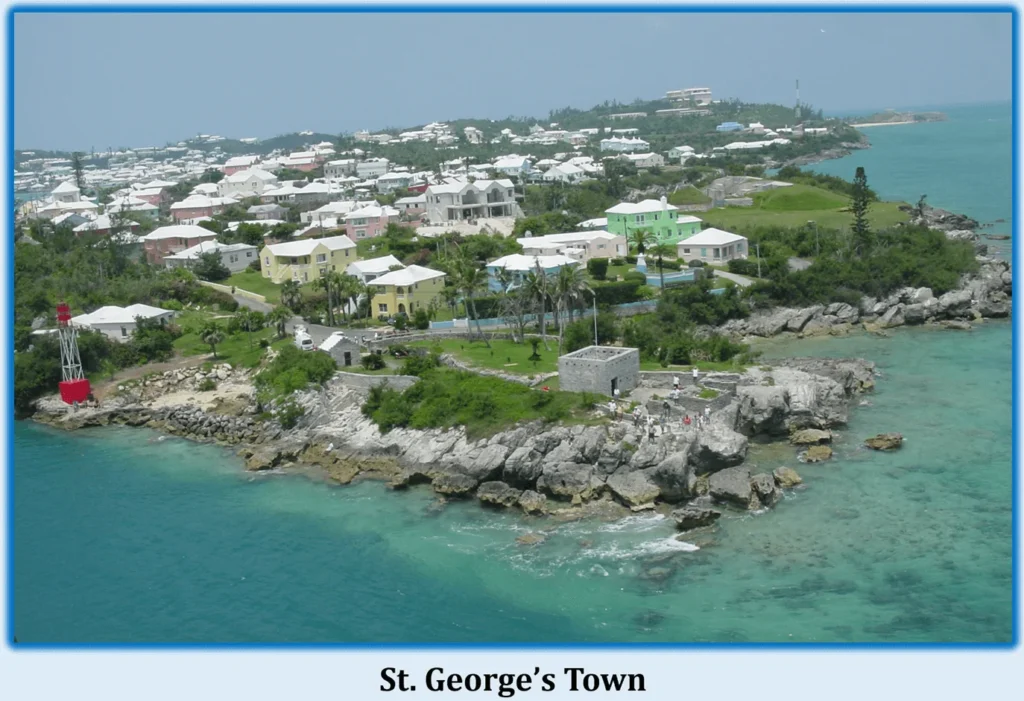
- St. George’s Town: A UNESCO World Heritage Site, St. George’s is one of the oldest continuously inhabited English towns in the New World. Its narrow streets and well-preserved colonial architecture offer a glimpse into Bermuda’s past. Key landmarks include St. Peter’s Church, the oldest Anglican church in continuous use in the Western Hemisphere, and the historic Town Hall. The town also features Fort St. Catherine, a fortress with exhibits on Bermuda’s military history and breathtaking views of the coastline.
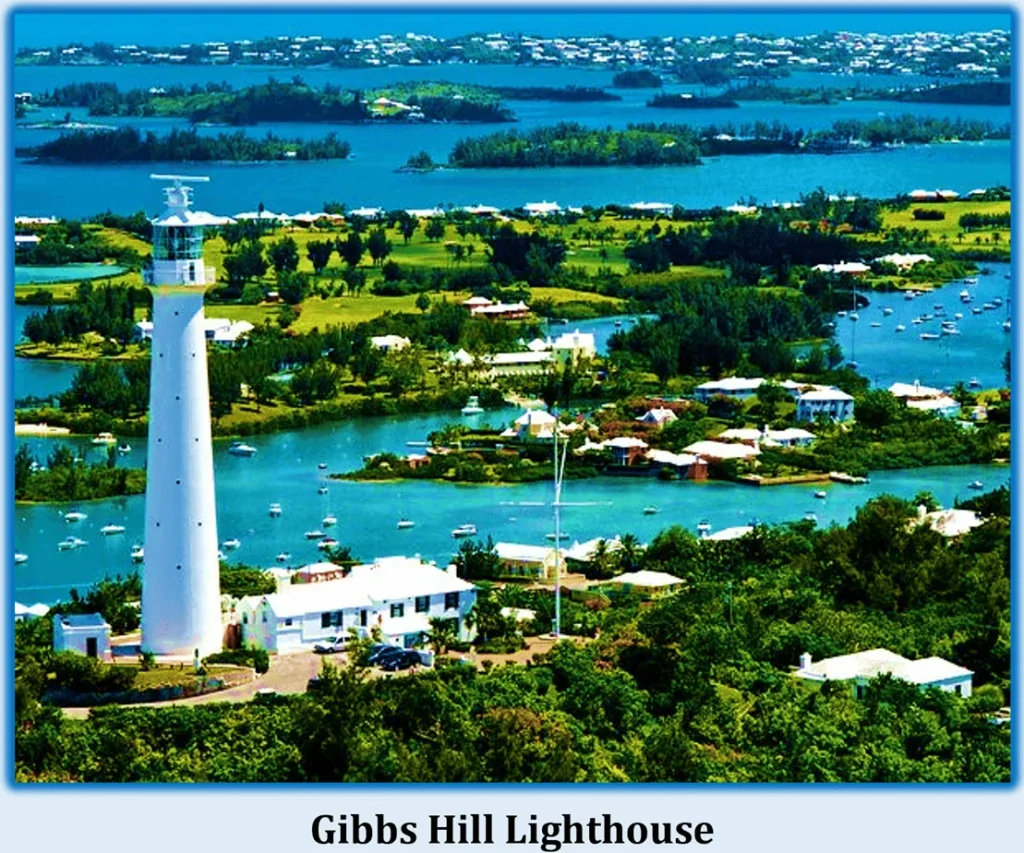
- Gibbs Hill Lighthouse: This iconic lighthouse, built in 1846, stands 117 feet tall and offers panoramic views of the island and surrounding ocean. Visitors can climb the 185 steps to the top for a stunning vista and learn about the lighthouse’s history and importance in maritime navigation.
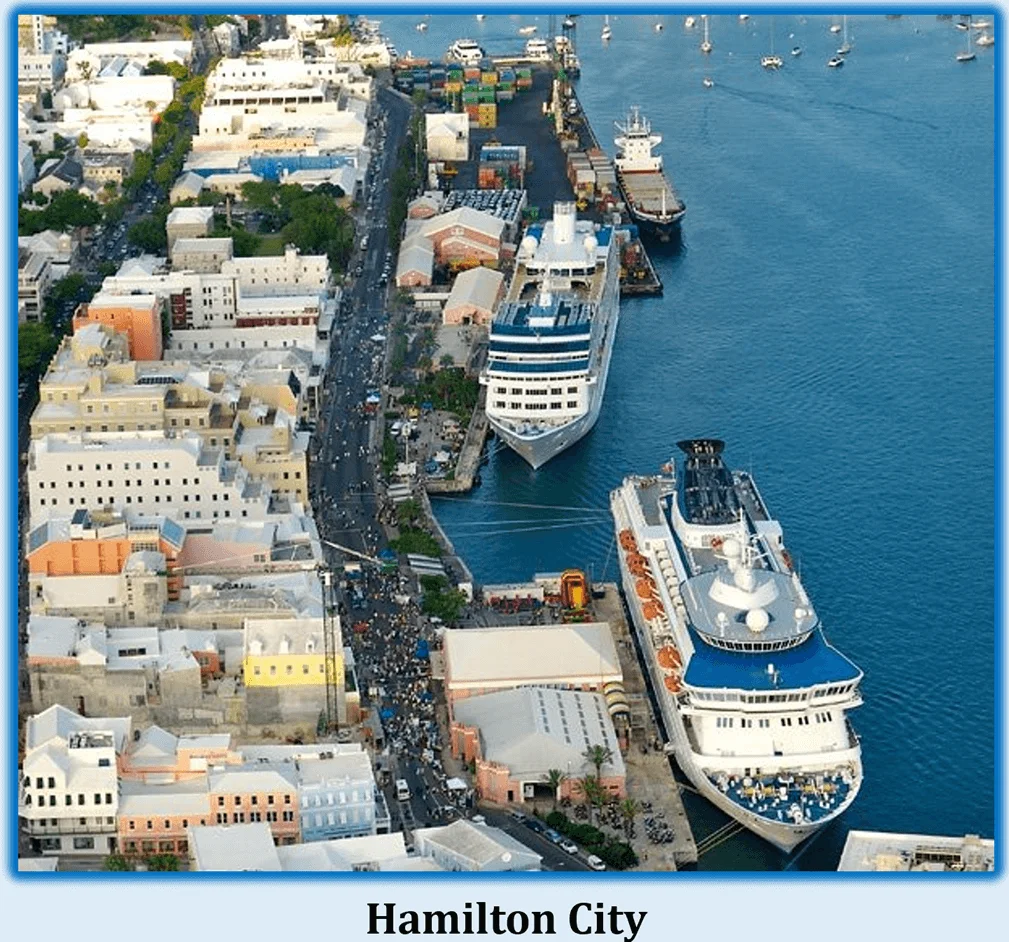
- Hamilton City: The capital city of Bermuda, Hamilton is a vibrant hub of activity with a mix of modern and historic attractions. Notable landmarks include the Cathedral of the Most Holy Trinity, an impressive neo-Gothic structure, and the Bermuda House of Assembly, the oldest parliament building in the Western Hemisphere. Hamilton also boasts a lively waterfront, bustling markets, and a variety of shops, restaurants, and galleries.
Bermuda Botanical Gardens and Other Green Spaces
Bermuda’s lush green spaces and beautifully manicured gardens provide serene environments for relaxation and exploration.
- Bermuda Botanical Gardens: Located in Paget Parish, these gardens span 36 acres and feature a diverse collection of plants, trees, and flowers from around the world. Visitors can explore themed gardens such as the Palm Garden, the Cactus House, and the Orchid Garden. The grounds also include an aviary, a formal rose garden, and a sensory garden designed for the visually impaired. The Botanical Gardens are home to Camden House, the official residence of Bermuda’s Premier, which is open for public tours.
- Spittal Pond Nature Reserve: This 64-acre reserve is Bermuda’s largest, offering a variety of habitats including coastal cliffs, salt marshes, and woodlands. The reserve is a haven for birdwatchers, with over 30 species of resident and migratory birds. Walking trails lead visitors through diverse landscapes, past historical sites like Portuguese Rock, where early settlers carved inscriptions.
- Queen Elizabeth Park: Located in the heart of Hamilton, this peaceful urban oasis features beautifully landscaped gardens, shaded walkways, and public art installations. The park is a perfect spot for a leisurely stroll or a relaxing break from the city’s hustle and bustle.
- Somerset Long Bay Park: This park offers a mix of sandy beach and nature reserve, providing opportunities for swimming, picnicking, and birdwatching. The adjacent nature reserve features trails that wind through coastal habitats, offering scenic views and a chance to spot local wildlife.
Bermuda Aquarium, Museum, and Zoo (BAMZ)
The Bermuda Aquarium, Museum, and Zoo (BAMZ) is one of the island’s premier attractions, providing an educational and entertaining experience for visitors of all ages.
- Aquarium: The aquarium features a diverse collection of marine life from Bermuda and around the world. Visitors can view colorful coral reefs, exotic fish, and fascinating invertebrates. The North Rock Exhibit showcases a living coral reef, offering a close-up view of the vibrant ecosystem found in Bermuda’s waters.
- Museum: The Natural History Museum at BAMZ provides insights into Bermuda’s geological formation, natural habitats, and the conservation efforts to protect its unique environment. Exhibits cover topics such as the island’s volcanic origins, the evolution of its flora and fauna, and the challenges of preserving its delicate ecosystems.
- Zoo: The zoo houses a variety of animals from different regions, with a focus on species from islands and coastal habitats. Visitors can see lemurs, flamingos, tortoises, and many other animals in naturalistic enclosures. The zoo also features interactive exhibits and educational programs aimed at promoting wildlife conservation and environmental awareness.
Bermuda’s top attractions offer a blend of historical, cultural, and natural experiences that cater to a wide range of interests. Whether exploring historic landmarks, enjoying the tranquility of botanical gardens, or discovering the wonders of marine life at BAMZ, visitors are sure to find something that captivates and inspires.
Practical Travel Tips
Planning a trip to Bermuda involves several practical considerations to ensure a smooth and enjoyable experience. From understanding how to get there to choosing the right accommodation and navigating the island, these tips will help you make the most of your Bermuda vacation.
Information on Flights and Entry Requirements
Flights
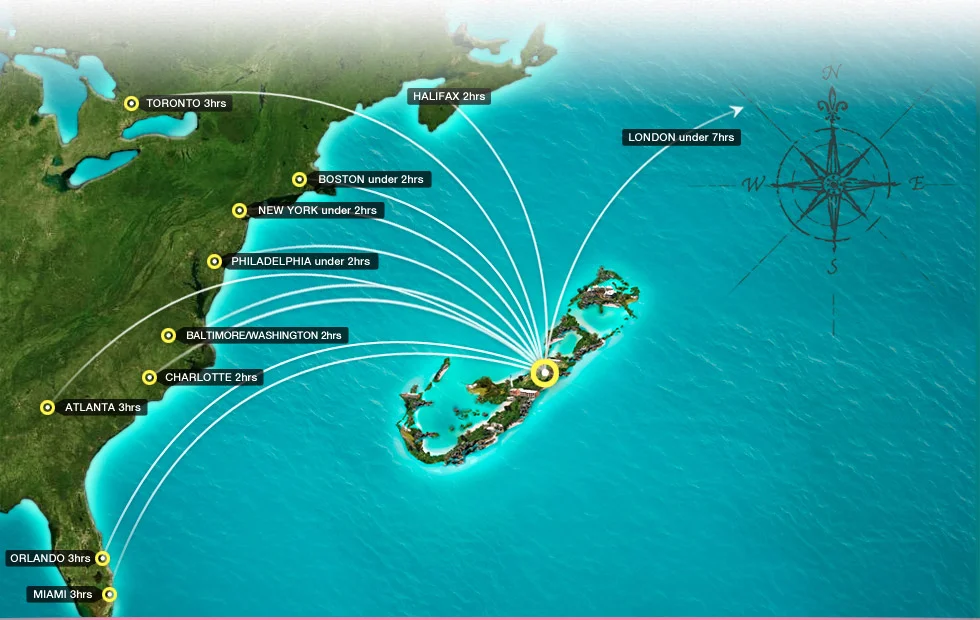
Bermuda is well-connected to several major cities in North America and Europe. Direct flights are available from cities such as New York, Boston, Miami, Toronto, and London. The island’s main airport, L.F. Wade International Airport (BDA), is located in St. George’s Parish, about a 30-minute drive from the capital, Hamilton.
Entry Requirements
- Passport: Visitors must have a valid passport. It’s recommended to have at least six months of validity beyond the planned departure date.
- Visa: Many travelers do not require a visa to enter Bermuda for short stays, including citizens of the United States, Canada, the United Kingdom, and European Union countries. However, it’s important to check specific requirements based on your nationality.
- Travel Authorization: As of the latest updates, Bermuda may require travelers to complete a travel authorization form online prior to arrival. This process often includes submitting personal information, flight details, and health declarations.
- Customs and Immigration: Upon arrival, visitors will go through customs and immigration checks. Be prepared to provide proof of accommodation and a return or onward ticket.
Overview of Transportation Options
Getting around Bermuda is convenient with several transportation options available.
Public Transportation
- Buses: Bermuda’s public bus system is reliable and covers most of the island. It’s an economical way to travel, with routes connecting major attractions and towns.
- Ferries: The ferry service offers a scenic way to travel between Hamilton, Dockyard, and St. George’s. It’s particularly enjoyable for sightseeing along Bermuda’s beautiful coastline.
Scooters and Electric Vehicles
- Scooters: Renting a scooter is a popular choice for tourists, providing flexibility and freedom to explore the island at your own pace. There are rental stores all across the island.
- Electric Cars: Electric car rentals, such as the Twizy, offer an eco-friendly alternative to scooters. These small, two-seater vehicles are ideal for navigating Bermuda’s narrow roads.
Taxis and Ride-Sharing
- Taxis: Readily available and convenient for short trips or airport transfers. Taxis can be reserved in advance or called on the street; they are metered.
- Ride-Sharing: Bermuda has introduced ride-sharing services, providing another convenient option for getting around.
- Bicycles: For those who enjoy cycling, renting a bicycle is a great way to explore Bermuda’s scenic routes and trails, such as the Bermuda Railway Trail.
Travel Tips to Keep You Safe and Well
Health Precautions
- Medical Care: Bermuda has high-quality medical facilities, including King Edward VII Memorial Hospital. Having travel insurance that pays for medical costs is advised.
- Vaccinations: No specific vaccinations are required for travel to Bermuda, but it’s always good to be up-to-date with routine vaccinations.
- Sun Protection: The sun in Bermuda can be intense, so use sunscreen, wear a hat, and stay hydrated to avoid sunburn and heat exhaustion.
Safety Tips
- Water Safety: While Bermuda’s waters are generally safe, it’s important to be cautious of strong currents and rip tides. Always swim at designated beaches and heed local advice.
- Road Safety: If renting a scooter or bicycle, be aware that Bermudians drive on the left side of the road. Comply with applicable driving laws and use a helmet.
- Personal Security: Bermuda is considered safe for tourists, but it’s wise to take common-sense precautions, such as not leaving valuables unattended and being mindful of your surroundings.
Conclusion & FAQs
Bermuda offers a captivating blend of natural beauty, rich culture, and a variety of attractions. From its iconic pink-sand beaches and historic landmarks to vibrant festivals, exquisite cuisine, and diverse outdoor activities, Bermuda provides a unique and memorable travel experience.
If you’re looking for a destination that combines relaxation, adventure, and cultural richness, consider Bermuda for your next vacation. Whether you’re a solo traveler, a couple, or a family, Bermuda has something to offer everyone.
On my last visit to Bermuda, I was struck by the island’s enchanting beauty and the warmth of its people. One evening, I attended a Gombey dance performance and was captivated by the rhythmic drumming and colorful costumes, a vivid reflection of Bermuda’s vibrant culture. The memory of that night, under the starlit sky, encapsulates what makes Bermuda so special – its ability to blend history, culture, and natural beauty into a truly magical experience. I highly recommend experiencing Bermuda for yourself and creating your own unforgettable memories.
Frequently Asked Questions (FAQs)
What is the currency used in Bermuda?
The Bermudian dollar (BMD), which is 1:1 fixed to the US dollar, is the national currency of Bermuda. On the island, US money and Bermudian dollars are both often accepted.
Do I need a visa to visit Bermuda?
Many visitors do not require a visa for short stays in Bermuda, including citizens of the United States, Canada, the United Kingdom, and European Union countries. However, it’s important to check specific entry requirements based on your nationality and the purpose of your visit.
Which season is ideal for traveling to Bermuda?
The peak tourist season in Bermuda is from May to October, when the weather is warm and rainfall is minimal. However, shoulder seasons (April and November) offer pleasant weather with fewer crowds and lower prices. Keep in mind that hurricane season runs from June to November, with the highest risk of storms typically in September and October.
How do I get around Bermuda?
Bermuda offers various transportation options, including buses, ferries, taxis, scooters, electric vehicles, bicycles, and rental cars. The public bus and ferry systems are reliable and cover most of the island, while renting a scooter or electric vehicle provides flexibility for exploration.
Are there any cultural customs or etiquette I should be aware of in Bermuda?
Bermudians are renowned for having a kind and courteous disposition. It’s customary to greet others with a smile and a “good morning” or “good afternoon.” Respect for elders and politeness are highly valued. When visiting churches or historical sites, modest attire is appreciated. Additionally, it’s customary to tip around 15-20% in restaurants and for taxi services.
What are some must-try dishes and drinks in Bermuda?
Bermuda’s culinary scene offers a variety of delicious dishes influenced by its diverse heritage. Must-try dishes include fish chowder, codfish breakfast, Bermuda rockfish, and Bermuda fish sandwich. Don’t forget to sample the island’s signature drink, the Dark ‘n’ Stormy, made with Gosling’s Black Seal Rum and ginger beer.
Are there any safety concerns to be aware of in Bermuda?
Bermuda is usually regarded as a vacation location that is safe. However, like any destination, it’s important to exercise caution and common sense. Avoid walking alone in poorly lit or isolated areas at night and be mindful of your belongings in crowded places. It’s also recommended to swim at designated beaches with lifeguards and to follow any safety warnings related to marine activities.
What outdoor activities are popular in Bermuda?
Bermuda offers a range of outdoor activities for nature lovers and adventure seekers. Popular activities include snorkeling, scuba diving, sailing, golfing, hiking along the Bermuda Railway Trail, exploring crystal caves, and kayaking through mangrove swamps. Wildlife enthusiasts can also enjoy birdwatching at Spittal Pond Nature Reserve or swimming with dolphins at Dolphin Quest.
Are there any cultural festivals or events worth attending in Bermuda?
Bermuda hosts a variety of cultural festivals and events throughout the year. Notable events include Cup Match, a two-day cricket match and celebration of Emancipation Day; Bermuda Day, marking the start of summer with a grand parade and festivities; and Harbour Nights, a weekly street festival in Hamilton featuring local vendors, food, and live entertainment. Additionally, the Bermuda Festival of the Performing Arts showcases local and international talent in music, dance, and theater.
What are some eco-friendly practices encouraged in Bermuda?
Bermuda places a strong emphasis on environmental conservation and sustainability. Visitors are encouraged to support eco-friendly initiatives such as recycling, conserving water and energy, and minimizing waste. Many hotels and businesses in Bermuda have implemented green practices, such as using renewable energy sources, reducing plastic usage, and promoting reef-safe sunscreen. Additionally, participating in beach clean-up efforts and respecting natural habitats help preserve Bermuda’s pristine environment for future generations.
